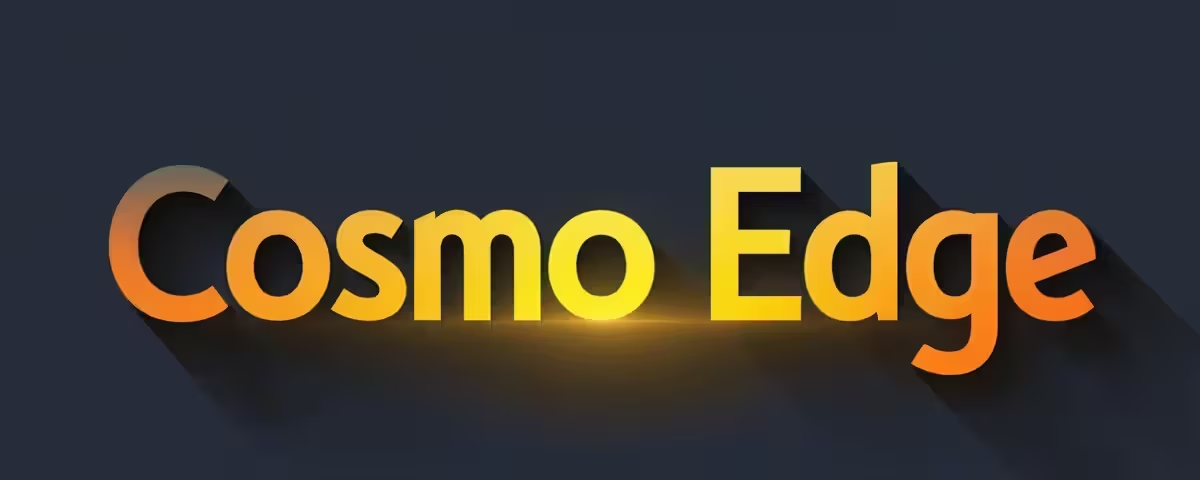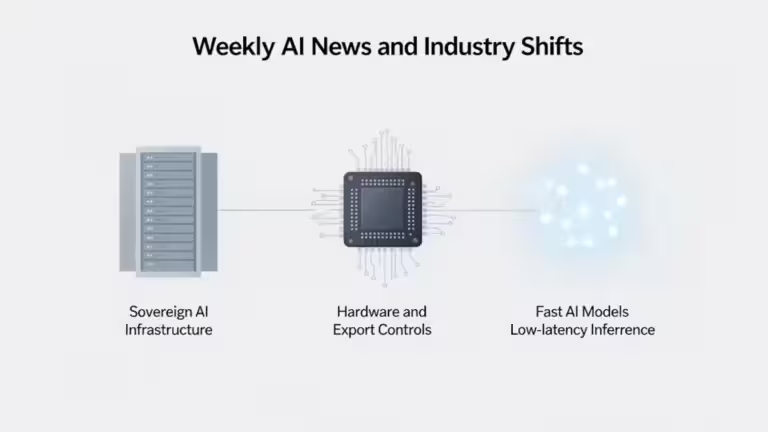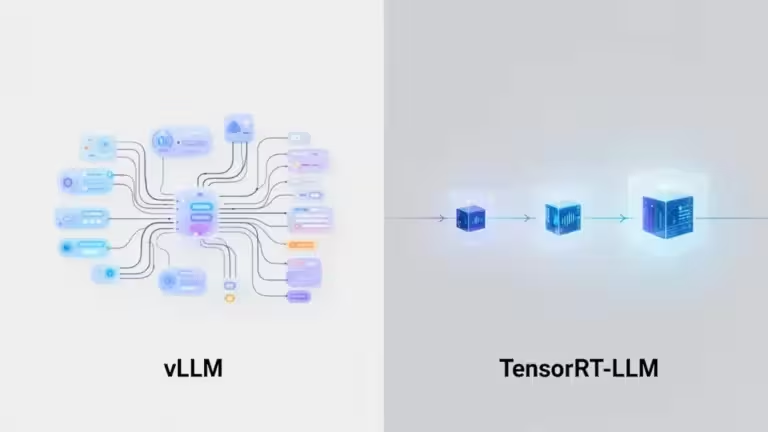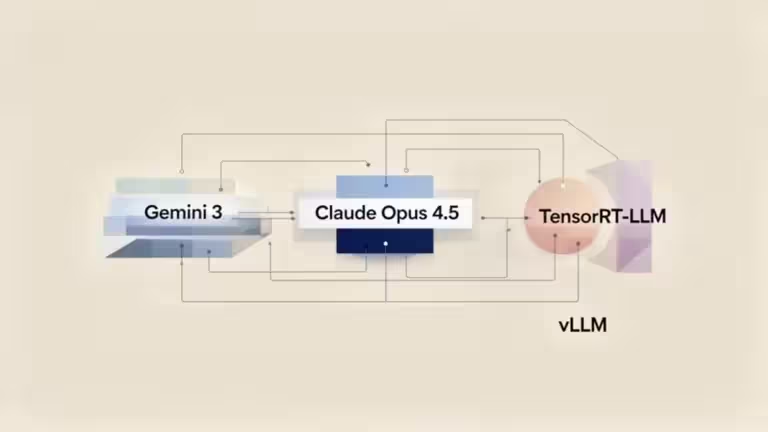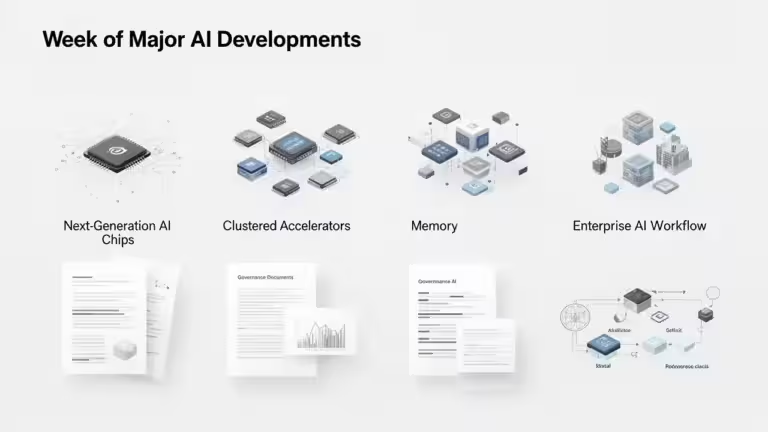Google EmbeddingGemma-300M: an AI embedding model optimized for classification, clustering, and RAG
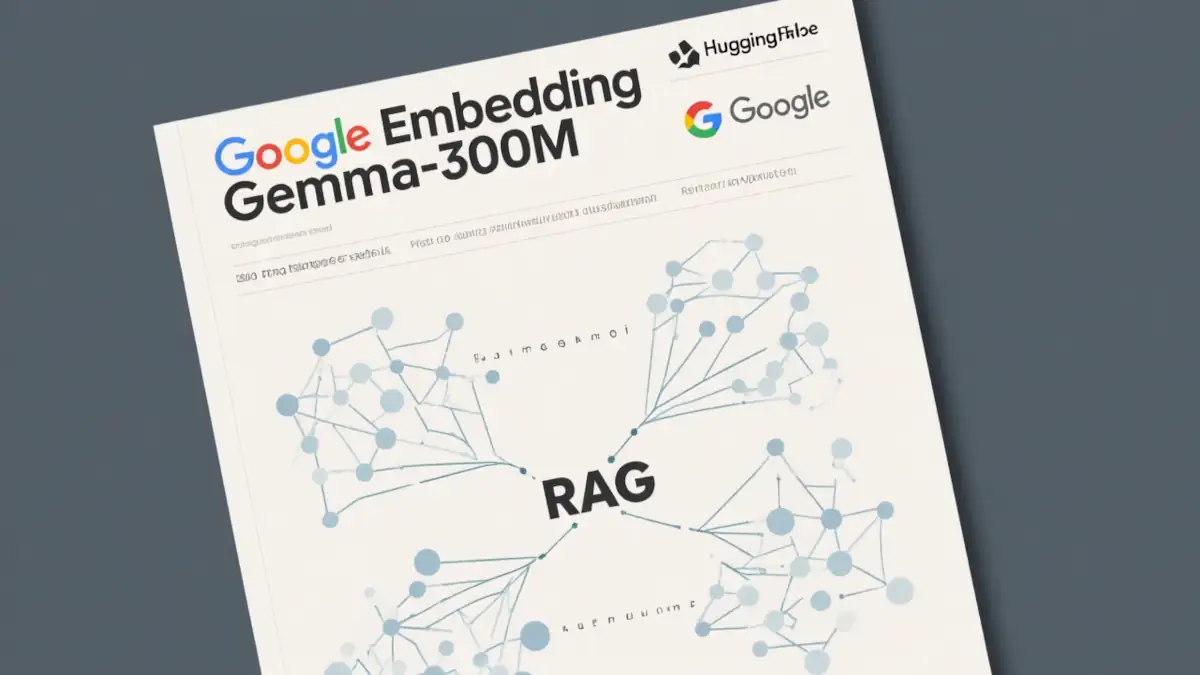
In the world of artificial intelligence, embedding models hold a central role. They transform text into numeric vectors that capture semantic meaning, enabling applications such as semantic search, automatic classification, document clustering, and Retrieval-Augmented Generation (RAG). In September 2025, Google DeepMind released a new model drawing attention: Google EmbeddingGemma-300M.
Designed as a lightweight (300 million parameters) yet powerful model, it strikes a balance between performance, efficiency, and accessibility, built on the same research as Google’s Gemini models. Let’s dive into why this model appeals to researchers, developers, and AI enthusiasts alike.
What is Google EmbeddingGemma-300M?
EmbeddingGemma-300M is an open-source embedding model, built on Gemma 3 and initialized with T5Gemma, as explained in Google’s official model card. It generates vector representations of text in 768 dimensions, with the flexibility to compress vectors down to 512, 256, or 128 using the Matryoshka Representation Learning (MRL) technique.
This model stands out with:
- Multilingual compatibility (supporting over 100 languages).
- Compact size enabling execution on PCs, laptops, and even smartphones.
- Direct integration with the Sentence Transformers library, widely adopted in the open-source community.
In short, EmbeddingGemma aims to democratize the use of AI embeddings, often restricted to heavier models like OpenAI text-embedding-ada-002 or Cohere Embed.
Performance of Google EmbeddingGemma-300M
According to Google DeepMind, the model was trained on 320 billion tokens from diverse sources:
- Multilingual web documents for broad semantic coverage.
- Code and technical documentation, enhancing its capabilities for developer-oriented search.
- Synthetic and task-specific datasets to strengthen performance in sentence similarity, classification, and information retrieval.
On the MTEB (Massive Text Embedding Benchmark), it delivers competitive results:
- 68.36 in English (768d).
- 61.15 in multilingual (768d).
- 68.76 on the Code benchmark.
Even in quantized forms (Q4, Q8), performance loss is minimal, making it a strong candidate for resource-constrained environments.
Real-world use cases: classification, clustering, and RAG
One of EmbeddingGemma-300M’s key strengths is its versatility. Here are practical examples showcasing its value:
1. Text classification
Imagine building an open-source content moderation tool with Hugging Face Transformers. With EmbeddingGemma, you can generate vectors for each message and then train a linear classifier or a scikit-learn model (such as an SVM) to detect hate speech, spam, or inappropriate content.
Example:
from sentence_transformers import SentenceTransformer
from sklearn.linear_model import LogisticRegression
model = SentenceTransformer("google/embeddinggemma-300m")
texts = ["This product is terrible", "Amazing experience!", "Worst service ever"]
labels = [0, 1, 0] # 0 = negative, 1 = positive
embeddings = model.encode(texts)
classifier = LogisticRegression().fit(embeddings, labels)
prediction = classifier.predict(model.encode(["Great service, loved it"]))
print(prediction) # Expected output: 1 (positive)
2. Document clustering
Another common scenario is clustering. For example, consider a digital library or a database of scientific papers. Using scikit-learn and EmbeddingGemma, you can automatically group documents based on semantic similarity.
This enables:
- Automatic organization of large corpora.
- Detection of emerging topics.
- Improved article navigation and recommendations.
Open-source example:
- Using faiss (Facebook AI Similarity Search) to index embeddings and perform fast searches across millions of documents.
3. Retrieval-Augmented Generation (RAG)
RAG is arguably one of the most strategic applications in 2025. The concept is straightforward:
- Encode documents using an embedding model.
- Store vectors in a vector database (Weaviate, Pinecone, ChromaDB, or FAISS).
- When a user asks a question, retrieve the most semantically relevant passages.
- Inject them into a LLM (e.g., LLaMA 3, DeepSeek R1, or Gemma 3) to generate a context-aware answer.
EmbeddingGemma is well-suited for this scenario thanks to:
- Its multilingual capabilities, enabling RAG in multiple languages.
- Its lightweight design, allowing local deployment (on servers or PCs).
- Its alignment with open-source frameworks like LangChain and Haystack.
Concrete example: an internal enterprise chatbot capable of answering employee questions by retrieving information from internal documents (HR policies, technical manuals, FAQs).
Strengths and limitations of Google EmbeddingGemma-300M
Strengths
- Open-source and lightweight: usable without high-end GPUs.
- Multilingual: supports over 100 languages.
- Easy integration: directly supported by Sentence Transformers.
- Versatility: classification, clustering, RAG, semantic search.
Limitations
- Reduced but existing risk of burn-in when used repetitively on small corpora.
- No float16 optimization: works with float32 or bfloat16, limiting some configurations.
- Still outperformed by very large models (>7B parameters) in complex reasoning tasks.
- To verify: real-world efficiency in specific multilingual cases (e.g., minority languages).
Comparison: Google EmbeddingGemma-300M versus other embedding models
The arrival of Google EmbeddingGemma-300M enters an already crowded market. To judge its relevance, it helps to compare it with other models used for semantic search and RAG.
1. EmbeddingGemma-300M vs OpenAI text-embedding-ada-002
- Size and accessibility: EmbeddingGemma (300M) is open-source and lightweight, whereas OpenAI’s Ada-002 is only accessible via API and requires a cloud connection.
- Multilingual support: EmbeddingGemma supports 100+ languages. Ada-002 excels in English but is more limited in multilingual coverage.
- Cost: EmbeddingGemma is free to run locally. Ada-002 is billed per token, which can become expensive at scale.
- Performance: Ada-002 remains slightly stronger on some English tasks, but EmbeddingGemma stands out for polyglot capabilities and local deployment.
If you need a cloud-first, English-optimized model, Ada-002 is still a reference. For multilingual open-source needs, EmbeddingGemma takes the lead.
2. EmbeddingGemma-300M vs Cohere Embed
- Philosophy: Cohere offers embeddings via API with a production-ready focus. EmbeddingGemma is open source and easy to integrate in on-prem projects.
- Languages: Cohere provides good coverage but trails Google on the number of languages.
- Usage: Cohere targets SaaS enterprises; EmbeddingGemma targets the open-source community and lightweight deployments.
Cohere Embed is ideal for companies that want a turnkey solution, while EmbeddingGemma serves open-source developers and teams that want full data control.
3. EmbeddingGemma-300M vs Voyage Embeddings
- Specialization: Voyage focuses on multilingual embedding quality and cross-lingual retrieval.
- Model size: Voyage often ships larger models (>1B parameters) with higher compute cost; EmbeddingGemma remains 300M and is laptop-friendly.
- Benchmarks: According to VoyageAI, their models outperform Ada and Cohere for multilingual tasks. Google indicates in the model card that EmbeddingGemma competes well at compact dimensions (512d, 256d, 128d).
Voyage is stronger where top-tier multilingual accuracy is critical, but EmbeddingGemma offers a superior power/efficiency trade-off.
4. EmbeddingGemma-300M vs E5 / Instructor models
- Origin: E5 and Instructor are community-driven models from Hugging Face, specialized for retrieval.
- Prompt engineering: Instructor expects structured prompts to maximize quality. EmbeddingGemma adopts a similar pattern (task: … | query: …), making it compatible with existing workflows.
- Performance: E5-large rivals Ada in places, while EmbeddingGemma remains lighter and multilingual.
E5 is very popular for RAG, but EmbeddingGemma is more polyglot and more optimized for limited hardware.
5. Summary table
| Model | Parameters | Access | Multilingual | Local deployment | English performance | Multilingual performance |
|---|---|---|---|---|---|---|
| EmbeddingGemma-300M | 0.3B | Open Source | ✅ 100+ | ✅ Yes | Very good | Excellent for its size |
| OpenAI Ada-002 | N/A | Cloud API | ❌ limited | ❌ No | Excellent | Average |
| Cohere Embed | N/A | Cloud API | ✅ | ❌ No | Excellent | Good |
| Voyage Embeddings | >1B | API + local* | ✅ Strong | ⚠️ costly | Very good | Excellent |
| E5 / Instructor | 1B+ | Open Source | ⚠️ partial | ✅ Yes | Good | Average to good |
This comparison shows that Google EmbeddingGemma-300M does not aim to beat cloud giants on absolute performance, but to offer an open-source, lightweight, multilingual, and versatile alternative.
Conclusion: why EmbeddingGemma-300M matters for the future of embeddings
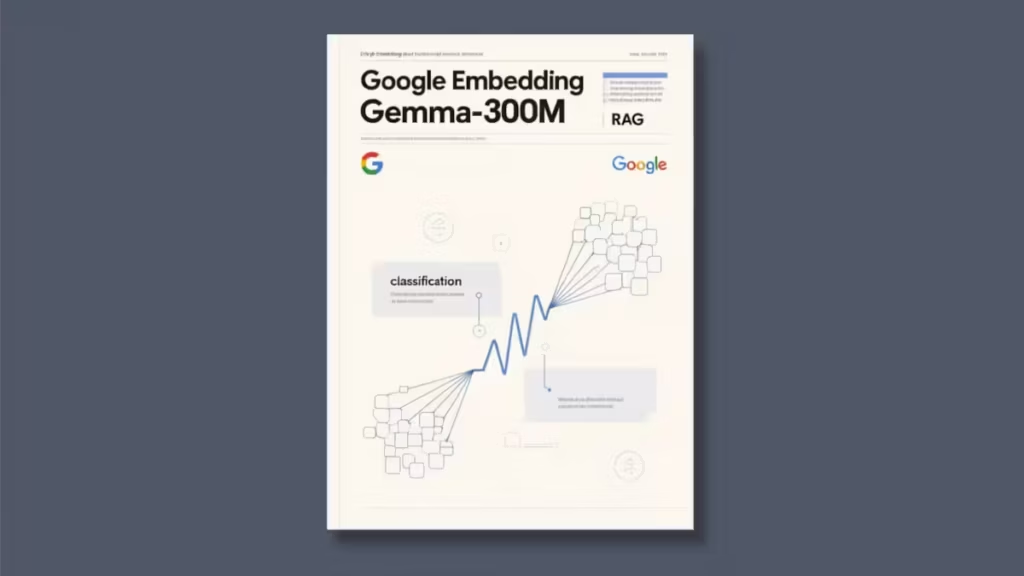
With EmbeddingGemma-300M, Google DeepMind shows it is possible to build a lightweight, open-source, multilingual model that competes with proprietary solutions. Its versatility (classification, clustering, RAG, semantic search), compatibility with open-source libraries like Sentence Transformers, and ability to run in constrained environments make it a valuable tool for developers and researchers.
More broadly, the model reflects a strong 2025 trend:
- Embeddings are becoming more accessible, with smaller yet highly efficient models.
- Multilingual support is a necessity to serve an increasingly polyglot web.
- Hybrid models (usable in cloud or locally) unlock wider adoption, including sensitive environments where data privacy is critical.
In the near future, we’ll likely see even more specialized embedding models: optimized for scientific search, code, medicine, or cross-modal (text + image). Until then, EmbeddingGemma-300M stands out as an open-source reference, a kind of “Ada for everyone,” without cloud dependence and with a strong focus on democratizing AI usage.
FAQ – Google EmbeddingGemma-300M
What is Google EmbeddingGemma-300M?
It’s an open-source AI embedding model from Google DeepMind, designed to convert text into numeric vectors and support tasks such as classification, clustering, and RAG.
How many parameters does EmbeddingGemma-300M have?
The model has 300 million parameters, making it much lighter than traditional LLMs while still delivering strong performance.
Is EmbeddingGemma-300M multilingual?
Yes. It supports over 100 languages, making it well suited for international and multilingual projects.
Can I run EmbeddingGemma-300M locally?
Yes. Unlike cloud solutions like OpenAI Ada-002 or Cohere Embed, EmbeddingGemma can be downloaded and run on a PC, server, or even a capable laptop.
What are the main use cases of EmbeddingGemma-300M?
The most common are:
- Text classification (sentiment analysis, moderation).
- Document clustering (organizing large text repositories).
- RAG (retrieval-augmented generation) to improve LLM responses.
- Multilingual semantic search.
Is EmbeddingGemma-300M free?
Yes. It’s published as open source on Hugging Face and can be used freely, including for commercial projects.
Your comments enrich our articles, so don’t hesitate to share your thoughts! Sharing on social media helps us a lot. Thank you for your support!
